Image Kernels
I built quite a lot of utilities last year that did image processing in some form or another. However, whenever I’ve written about them, I purposely avoided using the terms kernel and convolution. Why? Simply speaking, to save the unsuspecting AI bros from wetting their pants too much.
So, what are convolution kernels or filters exactly? These fancy words are used to describe an NxN matrix of weights. Is that it? Yes, nothing more and nothing less.
const float kernel[9] = {
0, 0, 0,
0, 1, 0,
0, 0, 0
};
Kernels can be of various sizes, but one of the most common ones that you’ll see in the wild is composed of 9 elements which can be represented by a 3x3 matrix.
This is all useful information, I guess, but how does one use such a kernel? Oh, it’s easy peasy lemon squeezy and boils down to the following steps:
- for every pixel in an image
- sample the surrounding 8 pixels; the current pixel is in the center
- multiply each sampled pixel with the corresponding weight from the kernel
- sum up the results
If you are asking yourself if I just wasted 30 seconds of your life to describe doing a dot product in a very backhanded way; then you are absolutely right!
It’s a dot product with two vectors that have 9 elements or components each. Let’s take a look at the code to demystify this further.
const float kernel[9] = {
0, 0, 0,
0, 1, 0,
0, 0, 0
};
const rgba_t samples[9] = { ... };
float sum = 0.0f;
for(int i = 0; i < 9; i++)
sum += samples[i].r * kernel[i];
Often times, a so called factor and a bias are applied to the sum. More fancy words, huh?
sum = sum * factor + bias;
While optional, these can help fine-tune the results. For instance if one wanted to halve the intensity of the results, one could simply set the factor to 0.5.
Talk is cheap, so let’s take a look at applying a so called emboss kernel and check out the results.
const float emboss_kernel[9] = {
-2, -1, 0,
-1, 1, 1,
0, 1, 2
};
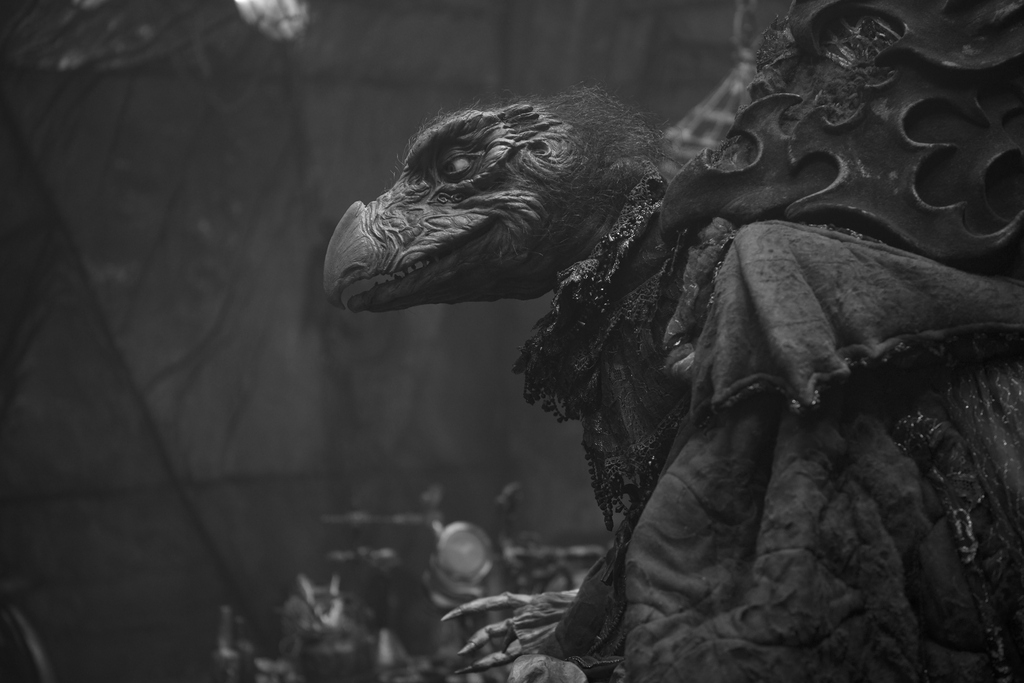
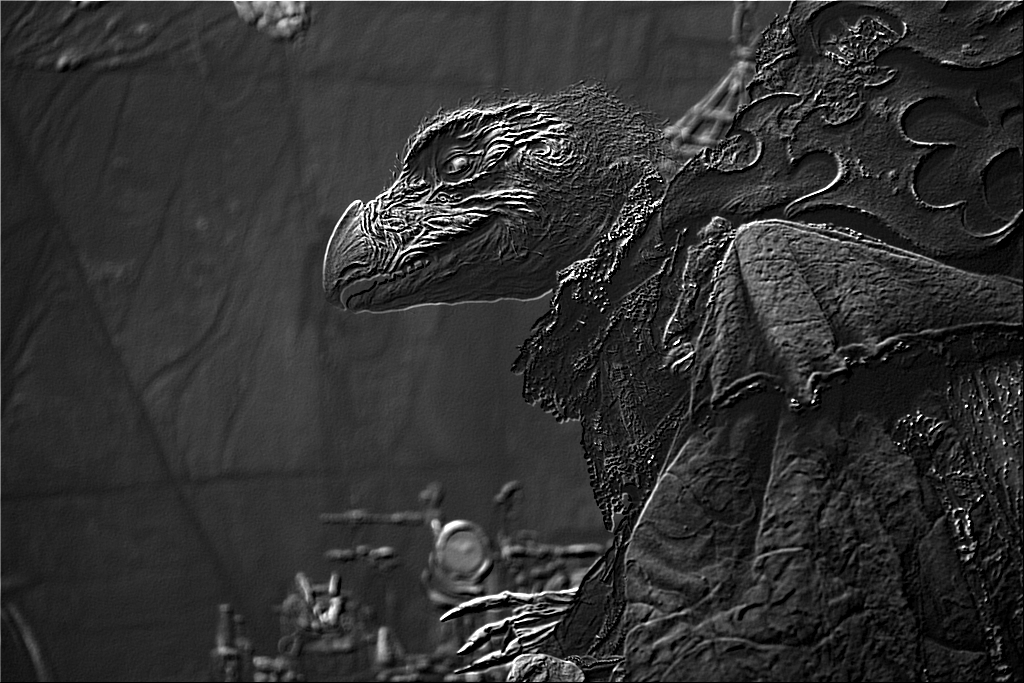
Not too shabby right? But what about colors? Instead of applying the kernel to only one channel, it’s possible to apply it red, green and blue at the same time.
const float kernel[9] = {
-2, -1, 0,
-1, 1, 1,
0, 1, 2
};
const rgba_t samples[9] = { ... };
float r = 0.0f;
float g = 0.0f;
float b = 0.0f;
for(int i = 0; i < 9; i++)
{
r += samples[i].r * kernel[i];
g += samples[i].g * kernel[i];
b += samples[i].b * kernel[i];
}
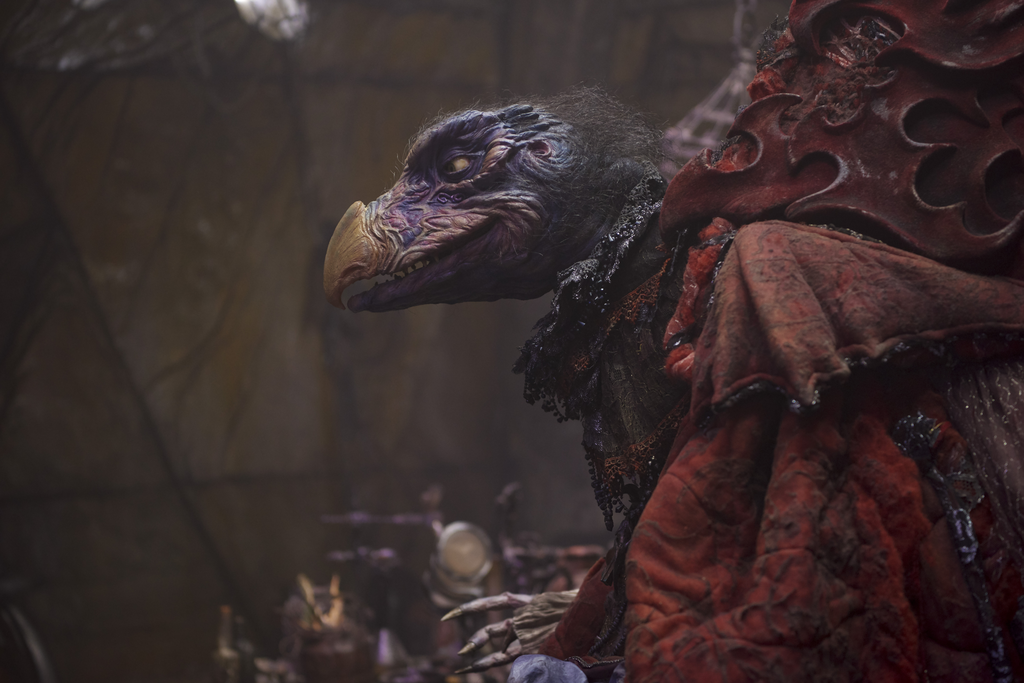
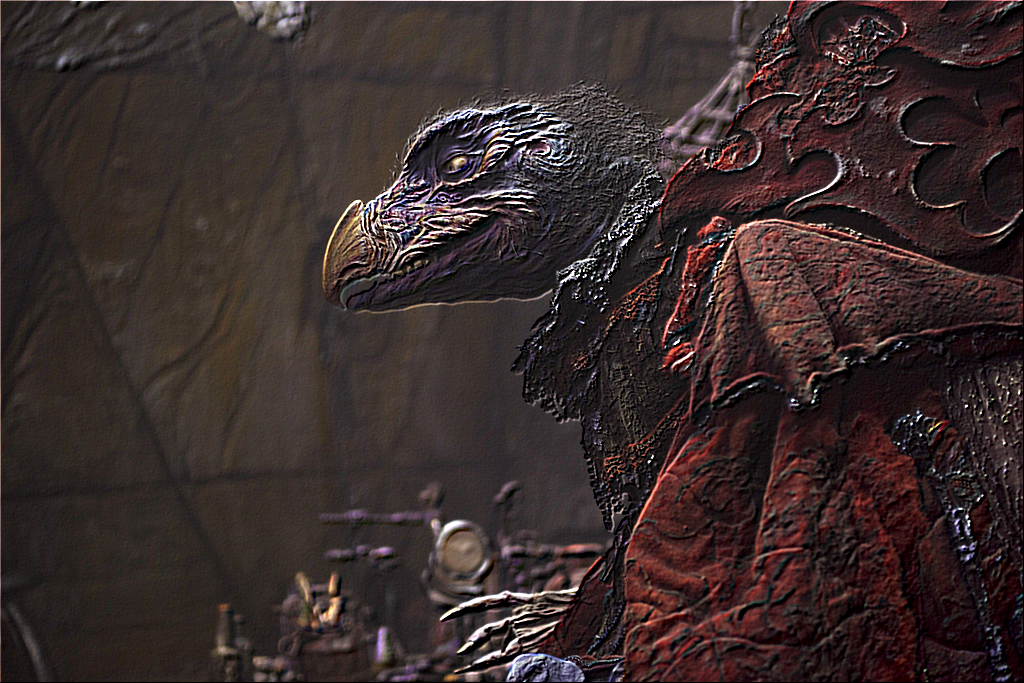
Before we take a look at the full source code, let’s awe a gander at another shiny kernel that results in a rough outline.
const float outline_kernel[9] = {
-1, -1, -1,
-1, 8, -1,
-1, -1, -1
};
In order to spice things up a little bit even more, let’s also set the factor to a value of 2 this time.

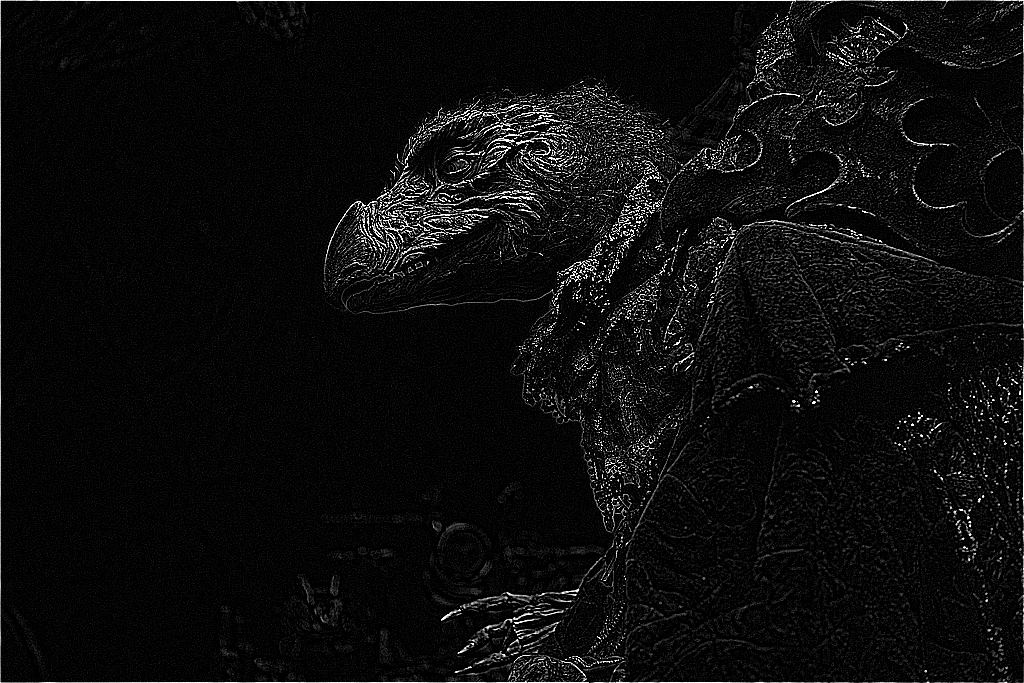
Source Code
You can find the full source code below as per usual.
/*
MIT LICENSE
Copyright (c) 2024, Mihail Szabolcs
*/
#include <stdbool.h>
#include <stdint.h>
#include <stdlib.h>
#include <stdio.h>
#include <memory.h>
#include <math.h>
#define STBI_NO_HDR
#define STBI_NO_LINEAR
#define STB_IMAGE_IMPLEMENTATION
#define STB_IMAGE_WRITE_IMPLEMENTATION
#include "stb_image.h"
#include "stb_image_write.h"
#ifndef UNUSED
#define UNUSED(x) (void)(x)
#endif
#ifndef BORDER_SIZE
#define BORDER_SIZE 1
#endif
#ifndef KERNEL_SIZE
#define KERNEL_SIZE 9
#endif
#define clampf(a, min, max) fmax(min, fmin(max, a))
#define grayscale(c) (((((c).r << 1) + (c).r) + ((c).g << 2) + (c).b) >> 3)
typedef union
{
uint32_t value;
struct
{
uint32_t r : 8;
uint32_t g : 8;
uint32_t b : 8;
uint32_t a : 8;
};
} rgba_t;
static void convert(
rgba_t *image,
const int w,
const int h
);
static void copy(
const rgba_t *restrict input,
rgba_t *restrict output,
const int iw,
const int ih,
const int ow,
const int oh
);
static void process(
const rgba_t *restrict input,
rgba_t *restrict output,
const int w,
const int h,
const float kernel[KERNEL_SIZE],
const float factor,
const float bias
);
int main(int argc, char *argv[])
{
int w, h, ibw, ibh, bpp, ret;
float factor, bias, kernel[KERNEL_SIZE] = { 0, 0, 0, 0, 1, 0, 0, 0, 0 };
bool grayscale;
rgba_t *input, *input_border, *output;
if(argc < 3)
{
fprintf(
stderr,
"usage: %s input.png output.png [arguments]\n\n",
argv[0]
);
fprintf(stderr, "arguments:\n");
fprintf(stderr, "--kernel - specify kernel matrix\n");
fprintf(stderr, "--factor - specify kernel factor\n");
fprintf(stderr, "--bias - specify kernel bias\n");
fprintf(stderr, "--grayscale - convert input image to grayscale\n");
return EXIT_FAILURE;
}
grayscale = false;
factor = 1.0f;
bias = 0.0f;
for(int i = 3; i < argc; i++)
{
if(!strcmp(argv[i], "--kernel") && i + 1 < argc)
{
ret = sscanf(
argv[++i],
"(%f,%f,%f,%f,%f,%f,%f,%f,%f)",
&kernel[0],
&kernel[1],
&kernel[2],
&kernel[3],
&kernel[4],
&kernel[5],
&kernel[6],
&kernel[7],
&kernel[8]
);
if(ret != KERNEL_SIZE)
{
fprintf(
stderr,
"error: --kernel is invalid\n"
);
return EXIT_FAILURE;
}
}
else if(!strcmp(argv[i], "--factor") && i + 1 < argc)
{
factor = atof(argv[++i]);
}
else if(!strcmp(argv[i], "--bias") && i + 1 < argc)
{
bias = atof(argv[++i]);
}
else if(!strcmp(argv[i], "--grayscale"))
{
grayscale = true;
}
else
{
fprintf(
stderr,
"error: invalid argument '%s' or argument value\n",
argv[i]
);
return EXIT_FAILURE;
}
}
input = (rgba_t *) stbi_load(argv[1], &w, &h, &bpp, sizeof(rgba_t));
if(input == NULL)
{
fprintf(stderr, "failed to load input: %s\n", stbi_failure_reason());
return EXIT_FAILURE;
}
ibw = w + (BORDER_SIZE << 1);
ibh = h + (BORDER_SIZE << 1);
input_border = malloc(ibw * ibh * sizeof(rgba_t));
if(input_border == NULL)
{
fprintf(
stderr,
"failed to allocate memory for input image with border\n"
);
stbi_image_free(input);
return EXIT_FAILURE;
}
output = malloc(ibw * ibh * sizeof(rgba_t));
if(output == NULL)
{
fprintf(stderr, "failed to allocate memory for output image\n");
free(input_border);
stbi_image_free(input);
return EXIT_FAILURE;
}
if(grayscale)
{
convert(input, w, h);
fprintf(stdout, "converted input image to grayscale ...\n");
}
copy(input, input_border, w, h, ibw, ibh);
stbi_image_free(input);
input = input_border;
process(input, output, ibw, ibh, kernel, factor, bias);
ret = stbi_write_png(
argv[2],
w,
h,
sizeof(rgba_t),
output + BORDER_SIZE + (BORDER_SIZE * ibw),
ibw * sizeof(rgba_t)
);
if(ret == 0)
{
fprintf(stderr, "failed to write output image: '%s'\n", argv[2]);
ret = EXIT_FAILURE;
}
else
{
fprintf(stdout, "wrote output image to '%s' ...\n", argv[2]);
ret = EXIT_SUCCESS;
}
free(output);
free(input);
return ret;
}
static void convert(
rgba_t *image,
const int w,
const int h
)
{
uint32_t a;
rgba_t c;
for(int i = 0, s = w * h; i < s; i++)
{
c = image[i];
a = grayscale(c);
c.r = a;
c.g = a;
c.b = a;
image[i] = c;
}
}
static void copy(
const rgba_t *restrict input,
rgba_t *restrict output,
const int iw,
const int ih,
const int ow,
const int oh
)
{
memset(output, 0, ow * oh * sizeof(rgba_t));
output = output + BORDER_SIZE + ow * BORDER_SIZE;
for(int y = 0; y < ih; y++)
{
memcpy(output, input, iw * sizeof(rgba_t));
input += iw;
output += ow;
}
}
static void process(
const rgba_t *restrict input,
rgba_t *restrict output,
const int w,
const int h,
const float kernel[KERNEL_SIZE],
const float factor,
const float bias
)
{
float r, g, b, k;
rgba_t s, samples[KERNEL_SIZE];
for(int y = BORDER_SIZE; y < h - BORDER_SIZE; y++)
{
const int yo = y * w;
const int you = (y - 1) * w;
const int yod = (y + 1) * w;
for(int x = BORDER_SIZE; x < w - BORDER_SIZE; x++)
{
const int xl = x - 1;
const int xr = x + 1;
samples[0] = input[xl + you]; // -1, -1
samples[1] = input[ x + you]; // 0, -1
samples[2] = input[xr + you]; // 1, -1
samples[3] = input[xl + yo]; // -1, 0
samples[4] = input[ x + yo]; // 0, 0
samples[5] = input[xr + yo]; // 1, 0
samples[6] = input[xl + yod]; // -1, 1
samples[7] = input[ x + yod]; // 0, 1
samples[8] = input[xr + yod]; // 1, 1
r = 0.0f;
g = 0.0f;
b = 0.0f;
for(int i = 0; i < KERNEL_SIZE; i++)
{
s = samples[i];
k = kernel[i];
r += s.r * k;
g += s.g * k;
b += s.b * k;
}
r = r * factor + bias;
g = g * factor + bias;
b = b * factor + bias;
r = clampf(r, 0, 255);
g = clampf(g, 0, 255);
b = clampf(b, 0, 255);
output[x + yo] = (rgba_t) {
.r = r,
.g = g,
.b = b,
.a = 0xFF
};
}
}
}
/* vim: set ts=4 sw=4 sts=4 noet: */
I am happy to report that no Skeksis has been harmed during the writing of this blog post. Hopefully this little disclaimer puts your mind at ease. This is a safe and very inclusive place.

2024-02-04 / c